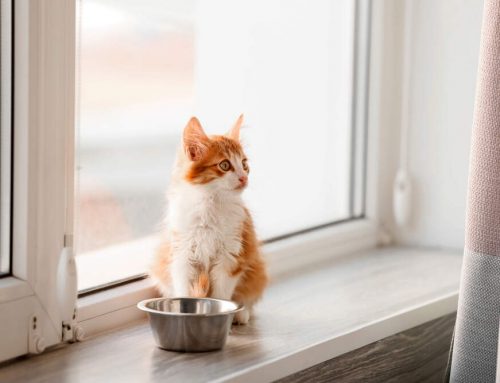Adopting a shelter cat is a great way to build a lasting friendship and give a home to a cat who needs one. It’s important to decide exactly how you want your new relationship to be so that you can choose the right cat. Follow these tips to have the best adoption experience for you and your new feline friend.
Preparing to Adopt
Preparation is the key to successfully adopting a cat from an animal shelter. Plan ahead by asking yourself what you want in a pet and what you’ll be able to give your new family member. Adopting a shelter cat means deciding what age you’d prefer, your budget, what your household is like and whether or not the cat is hypoallergenic. Setting up your new cat’s special space, making vet appointments and preparing your family (and other pets) are all better done sooner than later. Learn more about the best ways to make adopting a cat a happy and stress-free experience.
How to Adopt a Cat
Where to Adopt a Cat
Adopting a cat from a local shelter involves research, phone calls and in-person visits. You want to know about the shelter’s cleanliness, health check-ups and general care practices. The staff can tell you about the medical and behavioral history of the cats that are up for adoption to help you make an informed decision and find the one that will be the most comfortable in your home. However, you should ask about the shelter’s behavior testing techniques—insensitive or rushed exams, such as exams done the day after the cat’s arrival, won’t give the shelter or you an accurate reading of the feline’s temperament. Shelters are stressful environments for cats and their behavior there might not indicate their behavior in a home.
How Much Does It Cost to Adopt a Cat?
The adoption fee for cats varies depending on the shelter, cat and other circumstances. For example, the ASPCA’s New York City adoption center charges $125 for kittens and $75 for cats up to 3 years old, while cats older than age 3 are free. With this fee, they provide spaying or neutering surgery, vaccinations and a medical history. Don’t forget to estimate future expenses and add them to your budget, too. For cat food, litter, vet visits, pet insurance and surprise costs, you’ll probably spend at least $350 per year.
Adopting a Kitten or an Older Cat
Deciding between adopting a young or old cat is more important than it might seem. A kitten is definitely a bigger responsibility: like a baby, they need lots of attention, lots of exercise and a safe environment. Adult cats, on the other hand, are generally calmer and more experienced with people (and children) than kittens. Many cats, kittens especially, are happier with a partner in the home to play with and some shelters won’t place one kitten in a home without another young cat there. Ask yourself if you’re prepared to bring home two kittens. For older people or households with young children, an adult cat is likely a better choice.
Community Cats
Some shelters rescue “community” cats—born or primarily raised in a wild environment—that are able to be socialized. If the cat learns social behavior successfully, you can adopt much like you would a domestic cat. Even when socialized, a cat who has spent much of his life in the wild might remain cautious or frighten easily. Have patience and let the cat decide if he wants to be petted or held. It’s a good idea to create his special place in your home in a way that doesn’t corner him. Let him see the entrance to the room so that he’s not startled when someone comes in.
A Cat’s Former Home
Knowing about an adult cat’s past home(s) can help you choose a cat that will be comfortable with your living situation and ease his transition. If he’s never lived with dogs, it will probably be a tricky move into a home with two of them. If he lived for years with an elderly owner, he might not be ready for the energy levels of a home with small children.
Tips for Bringing a New Cat Home
1. Give your cat a safe room. A special area is important for any adopted cat to have and it’s best to set it up before they arrive. It’s safest to bring your new cat home in a carrier, where she’ll feel secure until she’s familiar with her new surroundings. Put her space in a smaller or low-traffic room, like a laundry room or bathroom, where she can be alone as she adjusts to the people in your home. Take her straight to her space and leave the carrier there so that she can hide inside if she feels frightened. Try to introduce her to the people you live with one at a time and slowly, letting her come up to them and leaving her alone if she doesn’t want to right away.
2. Prepare a visit to the vet. It’s also smart to have a visit with a veterinarian set up within a week of the adoption. The shelter might have given you a medical record that will be helpful for the vet to see. The vet can also recommend ways to make your new friend comfortable and happy, including diet information and hygiene tips.
3. Set aside bonding time.If you’ve adopted a kitten, bonding with her should involve lots of close contact—touching, petting and holding them so that they feel safe with you. Looking at them, letting them see your face and petting them will teach them to interact with other people in the same way. Older cats, however, will show you how comfortable they are with petting and holding. Let them take the lead as they adjust to you and you adjust to them.
4. Familiarize yourself with your cat’s likes and dislikes. If you were able to find out about an adult cat’s former home, it will help to set her up similarly to how she lived before. For example, you might be able to find out what food she likes or what litter she’s used to and, if you prefer different kinds, gradually change one thing at a time.
5. Introduce your new cat to other pets slowly. If you own another cat or a dog, keep them separated until your new cat is comfortable in her space. Then, you can start by introducing them to each other under a closed door, through a screen door or by switching their beds for a day. Again, patience is important in building a happy bond between two or more pets.
Adopting a cat is a happy and rewarding experience for you and for your new friend. Take time to be prepared for your new pet’s arrival and to ensure a safe and comfortable transition for everyone. Following these steps will help you build a loving and lasting bond.





